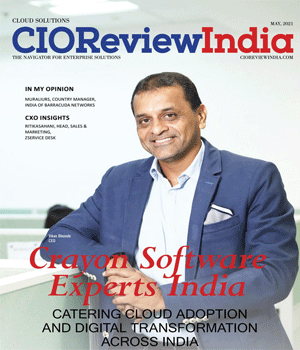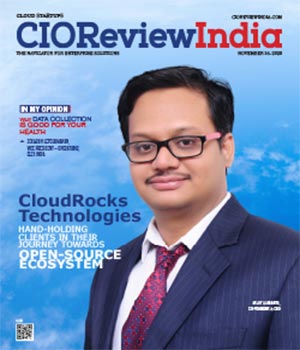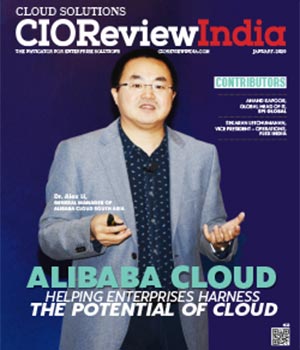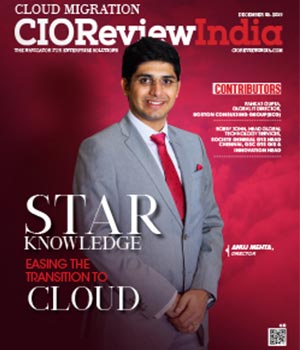
5 Essential Oracle Cloud Migration Tools For Seamless Transition
Vishal Pathak, Content Writer | Friday, 15 March 2024, 06:33 IST
 Cloud management is gaining popularity because of its key features like scalability, agility, security, and accessibility. Mig- ration to the cloud opens up a world of possibilities to improve the operational efficiency of the business. However, en- suring a smooth and successful mig- ration needs careful planning, execution, and the right tools. So, in this blog, we will discuss the 5 essential Oracle Cloud migration tools; and how they play a crucial role in simplifying and optimizing the whole transition process. What’s more, we will explore the key features of the most essential tool which is an automated testing tool–Opkey, and how it contributes to a seamless migration.
Cloud management is gaining popularity because of its key features like scalability, agility, security, and accessibility. Mig- ration to the cloud opens up a world of possibilities to improve the operational efficiency of the business. However, en- suring a smooth and successful mig- ration needs careful planning, execution, and the right tools. So, in this blog, we will discuss the 5 essential Oracle Cloud migration tools; and how they play a crucial role in simplifying and optimizing the whole transition process. What’s more, we will explore the key features of the most essential tool which is an automated testing tool–Opkey, and how it contributes to a seamless migration.
1. Oracle Database Migration Service (DMS)
The function of Database Migration Service is to streamline database migration to Oracle Cloud, offering both online and offline migration options. The core benefit of DMS is that it reduces the downtime during migration compared to traditional methods. Also, supports various database versions and platforms for migrations. Moreover, it provides a user-friendly interface for configuration and monitoring.
2. Oracle Data Integrator (ODI)
The function of Oracle data integrator is to provide assistance in data migration through data extraction, transformation, and loading (ETL) capabilities. The benefit of a data integrator is that it allows for complex data transformations and cleansing before loading into Oracle Cloud. It integrates with various data sources and offers extensive data mapping features. As well as offer graphical workflows for easier visualization and management of data migration processes.
3. Oracle Golden Gate
The function of Oracle Golden Gate is presented by the capability it offers through enabling real-time, continuous data replication between on-premises and Oracle Cloud environments. This results in minimizing data loss by ensuring continuous data flow during and after migration. Also, offers high availability and fault tolerance for reliable data replication. Besides, it supports high-volume data transfers and complex data synchronization scenarios.
4. Oracle Cloud Infrastructure (OCI) Resource Manager
The core function of the Oracle Cloud infrastructure resource manager is to provide a central console for provisioning, managing, and monitoring resources within the Oracle Cloud environment. This leads to simplified resource allocation and configuration within Oracle Cloud.
Also, allows for automated infrastructure provisioning based on predefined templates. It also offers cost management and optimization tools to control cloud spending.
5. Automated Testing Tool– Opkey
While previously mentioned tools focus on data migration and infrastructure management, they are in-house tools provided by Oracle itself but they do not facilitate the testing operation. In order to ensure your applications function as intended in the new environment, testing is crucial. This is where automated testing tools like Opkey become important in Oracle migration operations for seamless and smooth migration procedures.
Opkey For Ensuring a Seamless Transition Through Automated Testing
Opkey specifically addresses the challenges of testing during Oracle Cloud migrations by offering the following key functionalities:
- No-code test creation: Empowers users without programming expertise to build automated test scripts through a user-friendly interface. This facilitates broader team participation and streamlines test creation.
- Impact analysis and test scope definition: Helps identify the functionalities and data points most impacted by the migration, allowing more focused and efficient test coverage.
- Automated end-to-end testing: Executes test scripts automatically, covering various aspects like UI operation, data migration accuracy, and integration functionality. This eliminates inconsistencies and ensures thorough testing.
- Pre-built migration accelerators: Provides a library of pre-built test components designed for common migration scenarios and functionalities, reducing development time and effort.
- Self-healing script technology: Automatically detects and addresses minor changes within the Oracle Cloud environment that may impact existing test scripts, minimizing manual script maintenance.
- CI/CD pipeline integration: Seamlessly integrates with popular CI/CD pipelines, enabling automated testing to be embedded within the development lifecycle for early issue identification and resolution.
Benefits of Utilizing Opkey for Automated Testing
Opkey minimizes the manual testing efforts that are prone to human error and time-consuming. This leads to accommodating faster testing cycles and lower overall migration costs, ultimately maximizing efficiency and reducing cost. Moreover, it enhances accuracy by eliminating errors and enabling testing for a smooth transition. Also, make sure to mitigate any issues, bugs, or glitches to ensure fewer post-migration issues. Furthermore, it improves business continuity by validating the application functionality as it intends to perform in the new Oracle cloud environment. This leads to minimum disruptions and maintains the business operations integrity.
Bottom Line
Through the most reliable and scalable Oracle Cloud migration tool, Opkey, you can maximize the potential of your cloud solution. While tools like Oracle DMS, ODI, GOLDEN GATE, and OCI resource manager address various aspects of the process, automated testing tools like Opkey play a vital role in ensuring a seamless transition. To gain insights into the tools and its functionality visit the official website and book a free demo!
CIO Viewpoint
Unlocking the Potential of Cloud and AI: A...
By Pratik Jain, Lead Business Analyst – Digital Transformation, ACS Global Tech Solutions
Importance of Zero-Trust Cloud Security in the...
By Sameer Danave, Senior Director Marketing, MSys Technologies
The Transition to a Cloud-First World
By Kapil Makhija, Vice President -Technology Cloud, Oracle India
CXO Insights
Balancing Generative AI Capabilities with Data...
By Murad Wagh, Director - Sales Engineering, Snowflake
AI Integration in Multi-Cloud and Edge...
By FaizShakir, VP & Managing Director – Sales, Nutanix
The Role of Hybrid Cloud in ERP Integration







.jpg)
.jpg)
.jpg)

.jpg)
.jpg)
.jpg)

.jpg)

.jpg)




